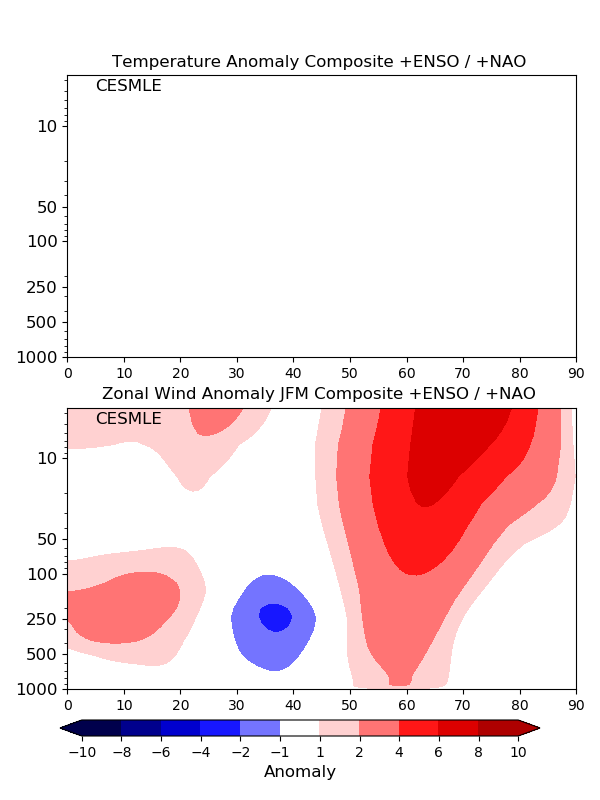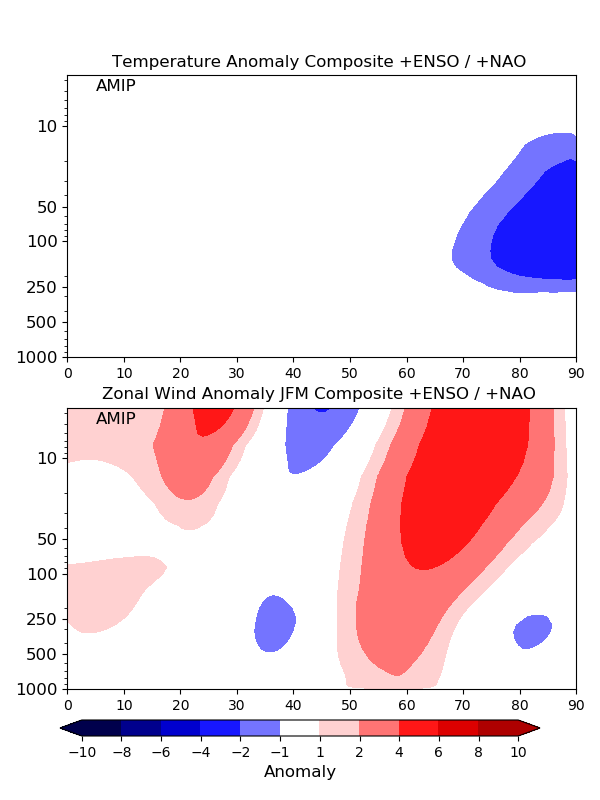

Vertical Profiles of the North Atlantic Region: CESM-LE vs AMIP-TOGA
To understand how the vertical structure of atmospheric circulation in the North Atlantic region (90W-40E) is impacted by El Niño and +NAO events, we average together all JFMs where Niño3.4 SSTAs are greater than 0.5 degrees Celsius and the NAO index is greater than 0.5. We do this for both CESM-LE and AMIP-TOGA.
Fig. 1: Temperature and zonal wind anomalies with height for JFM +ENSO/+NAO events in the North Atlantic region in the climatology of both models. n=132 JFMs for CESM-LE and n=35 JFMs for AMIP-TOGA.
|
|
|
Fig. 2: Temperature and zonal wind anomalies after Agung (JFM 1963), El Chichon (JFM 1983), Pinatubo (JFM 1992) averaged between 90W-40E in CESM-LE and AMIP-TOGA.
|
|
|
|
|
|
|
|
|
|
|
|
Based on these results, it is more likely for the westerly zonal wind anomaly to extend from the stratosphere towards the surface in the AMIP-TOGA runs. This is a subtle difference but it exists after El Chichon and Pinatubo. The implication here, is that when the SSTs are prescribed to climatological SSTs, and in the case of the volcanic eruptions this means they are favored towards El Niño-like conditions, then there is more easily a propagation down towards the surface of the westerly zonal winds. How warmer SSTs in the equatorial Pacific contribute to the downward propagation of this signal is a mystery. To investigate if +ENSO may play a role in the downward propagation of zonal westerly wind anomalies at between 60N and 70N we re-calculate the composite just for Niño3.4 SSTAs warmer than 0.5 degrees Celsius. However, we find that in both CESM-LE and AMIP-TOGA, there is a tendency for more easterly polar stratospheric winds. In AMIP-TOGA there is a tendency for warming in the polar stratosphere, likely associated with more stratospheric warming events.
Fig. 3:
|
|
|